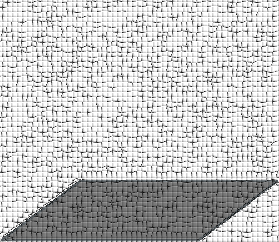DECserver Notes
General
- Use
DEFINE to make changes to permanent DB (becomes active on
next reboot)
- Use
SET to make changes to operational DB (only active in
current session)
- Use
CHANGE to make changes to both permanent DB and operational DB
- Use
LIST to display settings from permanent DB
- Use
SHOW to display current status or settings
from operational DB
- Use
PURGE to whipe or reset setting in permanent DB
- Use
CLEAR to whipe or reset setting in operational DB
DECserver Info
> SHOW SERVER (global server settings)
> SHOW SERVER STATUS (server status/utilization)
DECserver 90M
When using the DECserver 90M in combination with the backplane of the
MultiStack System (DETRX or DETAX backplane), the Position Identifier Dail
on the rear of the backplane should be set to the
Agent position.
If not, the UTP port (10baseT) will not be operational (may also apply to
the thinwire connection, not tested). The MultiStack System
Installation and Configuration guide doesn't explicitly mention
this although it does mention that a management agent in the stack is
assigned an IP address.
DECserver 300
Configuring DECserver 300
Enabling Command History on Port
> DEFINE PORT <port-nr> TYPE ANSI
Network Configuration
> DEFINE INTERNET ADDRESS <ip-addr>
> DEFINE INTERNET NAME RESOLUTION DOMAIN <domain>
> DEFINE INTERNET NAME RESOLUTION MODE ORDERED
> DEFINE INTERNET NAMESERVER <ns-name> ADDRESS <ns-addr>
> DEFINE INTERNET GATEWAY <gw-addr>
> SHOW INTERNET
Reboot DECserver
> INITIALIZE (reboot, 1m delay)
> INITIALIZE DELAY 0 (reboot immediately)
> INITIALIZE DIAGNOSE FULL COUNT 2 (reboot, twice thorough self-test)
Setup Telnet Listener for getty Behind MMJ Port
Telnet listener on (TCP/IP) port 2002; serial cable on MMJ port 2 connected
to serial port of some other system running a
getty on that port.
> DEFINE TELNET LISTENER 2002 PORTS 2
> DEFINE TELNET LISTENER 2002 CONNECTIONS ENABLED
> DEFINE PORT 2 ACCESS REMOTE
> DEFINE PORT 2 DEFAULT PROTOCOL TELNET
> DEFINE PORT 2 STOP BITS 1
> DEFINE PORT 2 AUTOBAUD DISABLED
> DEFINE PORT 2 SPEED 9600
> DEFINE PORT 2 TYPE ANSI
> DEFINE PORT 2 TELNET SERVER NEWLINE FROM HOST <CR>
> DEFINE PORT 2 TELNET SERVER NEWLINE TO TERM <CR>
> SHOW TELNET LISTENER 2002
> SHOW PORT 2
> SHOW PORT 2 TELNET CLIENT
> SHOW PORT 2 TELNET SERVER
> SHOW PORT 2 SESSIONS STATUS (only if connected)
However, when opening a telnet connection to port 2002 on the DECserver, the
getty login prompt appears but characters are echo'ed twice.
Enable Local Connection from one Port to Another
Define a LAT service "LPORTS" which enables local connections to be established
between ports 2 to 16.
> DEFINE SERVICE LPORTS CONNECTIONS ENABLED
> DEFINE SERVICE LPORTS IDENTIFICATION "Local port access"
> DEFINE SERVICE LPORTS PORTS 2-16 ENABLED
> DEFINE PORT 2-16 DEFAULT PROTOCOL LAT
> DEFINE SERVER ANNOUNCEMENTS ENABLED
Enabling server announcements doesn't appear to be necessary for accessing
ports locally.
> SHOW SERVICE LOCAL
> SHOW SERVICE LOCAL STATUS
> SHOW PORT 2
> CONNECT LAT LPORTS PORT PORT_2
"LAT" may be omitted if it's the default protocol for the port. Also note
that you use the
name of the port when connecting, but its
number when defining the service.
DECserver 700
Setup Telnet Listener for Printer Behind RJ Port
Not sure whether this is the proper way to do it, but the command list below
did enabled me to make hardcopies on a Digital LA30N Companion dot-matrix
printer (on serial port 8). Send text file (UNIX line-endings) to TCP port 2008.
> SET TELNET LISTENER 2008 PORT 8
> SET TELNET LISTENER 2008 CONNECTIONS ENABLED
> SET PORT 8 TELNET SERVER NEWLINE FROM TERM <LF>
> SET PORT 8 TELNET SERVER NEWLINE TO HOST <CRLF>
> SET PORT 8 TYPE HARDCOPY
> SET PORT 8 ACCESS REMOTE
> SET PRINTER la30n AUTOCR ENABLED
> SET PRINTER la30n HEADER DISABLED
> SET PRINTER la30n TRAILER DISABLED
> SET PRINTER la30n CONNECTIONS ENABLED
> SET PRINTER la30n IDENTIFICATION "Digital LA30N Companion"
> SET PRINTER la30n PORTS 8 ENABLED
Links
Rewire Cisco console cable for DECservers

